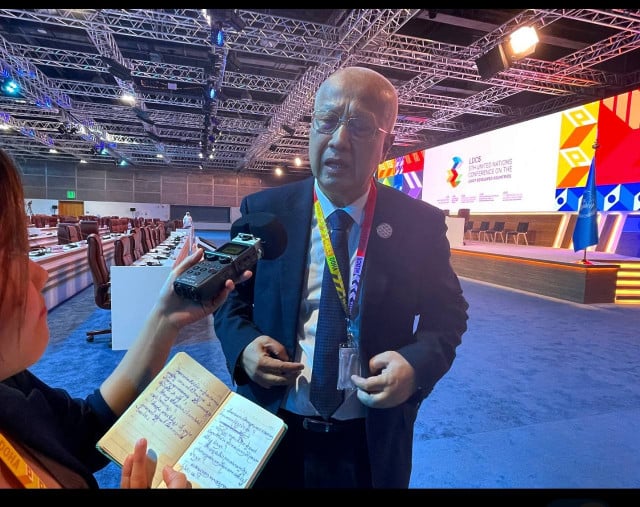Cambodian Stolen Crude Oil Case Sees Progress

- By Kheav Moro Kort
- August 10, 2022 1:59 PM
PHNOM PENH – The case of nearly 300,000 barrels of crude oil which were stolen in June 2021 has been seeing positive progress, authority said.
The Ministry of Mines and Energy secretary of state, Meng Saktheara, confirmed in a press conference on Aug. 9 that the ministry has reached an in-principle agreement to allocate the value of Cambodia’s first oil production, which was stolen in June 2021.
“All the stakeholders involved have recently agreed to rely on an independent agency to inspect the oil tanker [the MT Strovolos] which has returned from Bangladesh to dock in Thailand waters,” Saktheara said, adding that the oil was believed to still be onboard.
“The agency’s role was to check whether the oil quantity and quality were affected or not. And it could confirm that there is no loss of oil, nor that the quality is degraded.”
After several rounds of negotiation, the concerned parties have reached an in-principle agreement to allocate the value of the stolen oil. The Cambodian government is to receive 70 percent of the oil, the shipping company 26 percent and KrysEnergy’s creditors 4 percent.
At the current trading price of crude oil, the Cambodian government hopes to earn $25 million from the sale, which is believed to occur by the end of September at the latest.
The story started in December 2020, when KrysEnergy, a Singapore-based company, started operating the offshore Apsara Block A concession, Cambodia’s only operational oil well, located in the Gulf of Thailand. But only six-months later, in June 2021, the company, overwhelmed by debt, filed for liquidation, confirming it was unable to pay its creditors.
The same month, the oil tanker MT Strovolos, which was being leased by KrysEnergy, left the Cambodian waters without authorization loaded with nearly 300,000 barrels of crude oil (Cambodia’s entire oil production in history) as a means of pressure to ensure it gets paid. The boat then docked in Indonesia, Bangladesh and eventually Thailand.
Opportunity in a crisis
Given the worldwide rise in the price of oil due to the instability caused by the war in Ukraine, Secretary of State Meng Saktheara believes that Cambodia is likely to earn more revenue by selling the crude oil now than it had expected from selling the oil when it was first collected.
He further added that the incident gives an opportunity to showcase the country’s crude oil potential and maturity in managing the sector.
“It gives confidence and guarantees for investors that the recoverable volume of oil is accurate to the data Chevron [which undertook the exploration surveys] predicted. It means that Chevron's estimates of Cambodia’s oil potential is real, which is a good sign for business,” Saktheara said.
“As we’re resolving this dispute peacefully, it shows our maturity in managing the oil sector to all investors,” he added.
According to the General Department of Petroleum Director-general Cheap Sour, there are 19 onshore and six offshore blocks existing for oil resource exploration.
“This block division is to attract more investors to apply for oil exploration. But so far, the ministry has not found any commercial oil in any of the 19 onshore blocks.”
Sour revealed that the Canadian-owned company EnerCam Resources Co Ltd (EnerCam) is studying Cambodia’s onshore oil exploitation potential, while it is also considering investing in the oil extraction from Cambodia’s offshore Apsara Block A, which became vacant once the government terminated its agreement with bankrupt KrisEnergy Ltd.
EnerCam received the approval for a 7,300 square-kilometer onshore oil exploration from the Cambodian government in 2019.
Cambodia’s oil quest started in the 2010s, when exploration began in the country’s waters, with the promising well of Apsara Block A. After being delayed and handed over to several oil companies, the first drop of oil was drilled on Dec. 29, 2020 by KrysEnergy.
A study by the Economic Research Institute for Southeast Asia and East Asia estimated that the demand for petroleum products in Cambodia will likely increase from 2.8 million tonnes to 4.8 million and 8.3 million tonnes by 2030 and 2040 respectively.















